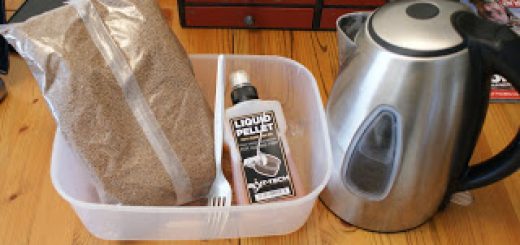Looking forward to this season I need to improve several aspects of my fishing, they include;
- The long pole – All to often I fish at 9 or 11 meters and when required to fish out at 13m+ I find all skill packs up and leaves and I repeatedly slap the water or spill my feed from my cups, disturbing the fish and missing vital bites.
- Waggler Fishing – I aim to fish venues which are more than X number of pole sections wide, hopefully it will help improve my cast accuracy too!
- Feeder and straight lead fishing – I need to fish the feeder and straight lead more often and practicing it in the summer, when the fish are up and feeding is essential. It can be a deadly method in the winter, but all too often I fall back on the pole for those sure fire winter fish.
Concentrating specifically on the feeder for the moment, there are several rig patterns for fishing the feeder, but only a few have stood the test of time, and fewer still get retrieved tangleless which means a much less frustrated angler. In a recent question and answer session with a famous angler I asked about these various types of feeder rigs and what ones I should use. His response was “running feeder, to a swivel every time”. After a few more questions and looking into the specifics of this rig, the only issue anglers regularly encounter is line abrasion from the running swivel eye of the attached feeder. This can be caused by continuous casting, landing fish and your line rubbing against the landing net frame, fish rubbing against your line and, fish diving into a snag causing your line to rub against the snag. A way to counter this line abrasion and prevent snap offs is by using the “twizzled loop”. This method of twisting and tying the line creates a short shock absorber when casting and also reduces the about line abrasion that fishing straight through to a swivel. It’s very straight forward and can be done by following these 5 simple steps;

1. Holding your mainline create an upside U shape.
2. Then pinch the line firmly with your left hand not allowing it to move, but with your right hand twist the line so that it spins around itself.
3. Continue twisting the line in your right hand until you have created a twizzled loop of required length.
4. To secure the loop, pinch both ends together, create a loop of twizzled line and finish with a figure 8 knot.
5. Once you have cut the tag end off you are done.
You can either feed the feeder swivel up the line before tying the knot or simply thread it down the line once the loop has been tied. You can also attach a swivel to the end of the loop by threading the line through the eye of the swivel then once an inch or so of line has passed through the eye, feed the unthreaded swivel eye back up through the line loop creating a “loop-to-loop” connection. Why not give it go? If you have any questions on the above please use the contact form on the right.



Recent Comments